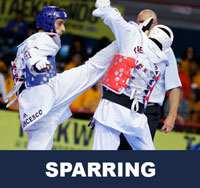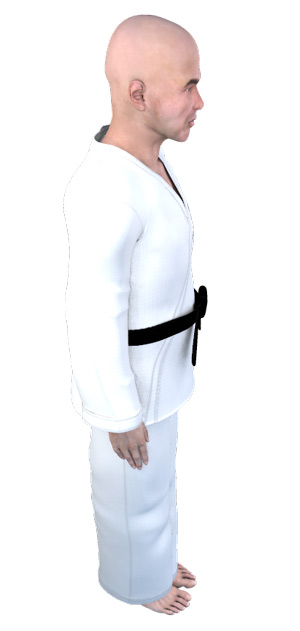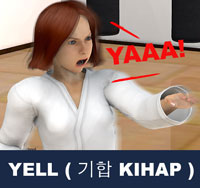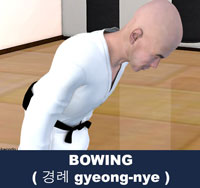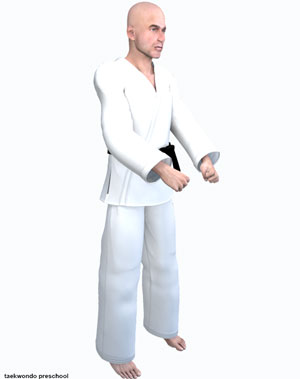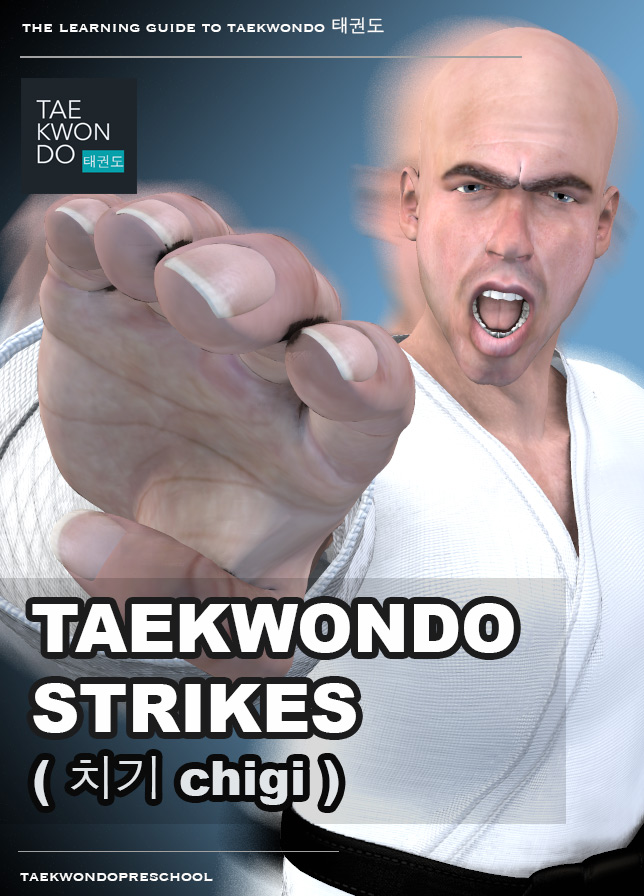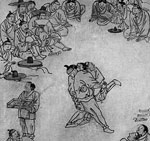Taekwondo 태권도Taekwondo Preschool
Taekwondo is known for its emphasis on high kicking and fast hand techniques, which distinguishes it from other popular martial arts and combat sports such as karate. However, the World Taekwondo (WT) believes that because the leg is the longest and strongest limb a martial artist has, kicks thus have the greatest potential to execute powerful strikes without successful retaliation.
View Taekwondo 태권도 »
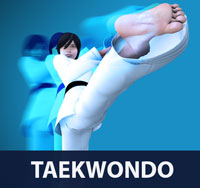
Taekwondo 태권도
Korean Martial Arts
Physically, taekwondo develops strength, speed, balance, flexibility, and stamina. An example of the union of mental and physical discipline is the breaking of wooden boards, bricks or tiles, which requires both physical mastery of the technique and the concentration to focus one's power.
Taekwondo is known for its emphasis on high kicking and fast hand techniques, which distinguishes it from other popular martial arts and combat sports such as karate. However, the World Taekwondo (WT) believes that because the leg is the longest and strongest limb a martial artist has, kicks thus have the greatest potential to execute powerful strikes without successful retaliation.
Taekwondo as a martial art is popular with people of both genders and of many ages. Physically, taekwondo develops strength, speed, balance, flexibility, and stamina. An example of the union of mental and physical discipline is the breaking of wooden boards, bricks or tiles, which requires both physical mastery of the technique and the concentration to focus one's power.
In Korean, tae (태) means "to strike or break with foot"; kwon (권) means "to strike or break with fist"; and do (도) means "way", "method", or "path". Thus, taekwondo may be loosely translated as "the way of the foot and the hand." The name taekwondo is also written as taekwon-do, tae kwon-do or tae kwon do by various organizations.
A taekwondo student typically wears a uniform (dobok 도복/道服), often white but sometimes black (or other colours), with a belt ( 띠 dhee) tied around the waist. There are at least three major styles of dobok, with the most obvious differences being in the style of jacket: (1) the cross-over front jacket that resembles traditional Asian clothing, (2) the V-neck jacket (no cross-over) typically worn by World Taekwondo (WT) practitioners, and (3) the vertical-closing front jacket (no cross-over) typically worn by ITF practitioners. The belt colour and any insignia thereon indicate the student's rank. In general, the darker the colour, the higher the rank. The school or place where instruction is given is called the dojang ( 도장 ). The grandmaster of the dojang is called a gwanjangnim (관장님); Master (senior instructor or head of dojang) is called sabeomnim (사범님); Instructor is called gyosannim (교사님); Assistant Instructor is called jogyonim (조교님).
Taekwondo is traditionally performed in bare feet, though there are specialist training shoes that can sometimes be worn.
Although each taekwondo club or school will be different, a student typically takes part in most or all of the following:

- Learning the techniques and curriculum of taekwondo
- Both anaerobic and aerobic workout, including stretching
- Self-defense techniques ( 호신술 hosinsool )
- Patterns (also called forms, poomse 품새/品勢, tul 틀, hyeong 형/型)
- Sparring ( 겨루기 gyeorugi ) in World Taekwondo (WT), or matsogi 맞서기 in the International Taekwondo Federation (ITF)), which may include 7-, 3-, 2- and 1-step sparring, free-style sparring, arranged sparring, point sparring, and other types
- Relaxation and meditation exercises; breathing control
- Throwing ( 던지기 deonjigi ) and/or falling techniques ( 떨어지기 ddeoreojigi )
- A focus on mental and ethical discipline, etiquette, justice, respect, and self-confidence
- Breaking ( 격파 gyeokpa ), using techniques to break boards for testing, training and martial arts demonstrations. Demonstrations often also incorporate bricks, tiles, and blocks of ice or other materials. Can be separated into three types:
- Power breaking – using straightforward techniques to break as many boards as possible
- Speed breaking – boards are held loosely by one edge, putting special focus on the speed required to perform the break
- Special techniques – breaking fewer boards but using jumping or flying techniques to attain greater heights, distances, or to clear obstacles
- Exams to progress to the next rank
* Please see a certified Master Instructor ( 사범님 sabeomnim ) for training. Proper guidance and instructions are needed to ensure safe training.
Most International Taekwondo Federation (ITF) schools teach the "sine wave" technique when performing patterns. This involves raising one's center of gravity between techniques, then lowering it as the technique is performed, producing the up-and-down movement from which the term "sine wave" is derived. Other schools teach that one's center of gravity should remain generally constant throughout the performance of a pattern except where the pattern's description states otherwise.
There are five tenets defined in the International Taekwondo Federation (ITF) and several more in World Taekwondo (WT).
Indomitable Spirit ( 백절불굴 baekjul-boolgool ): "To have indomitable spirit means to have the courage to stand up for what you believe in, no matter what odds you are up against, and to always give 100% effort in whatever you do." View Taekwondo Tenets »
RESOURCES
This article uses material from the Wikipedia article "Taekwondo", which is released under the Creative Commons Attribution-Share-Alike License 3.0.






